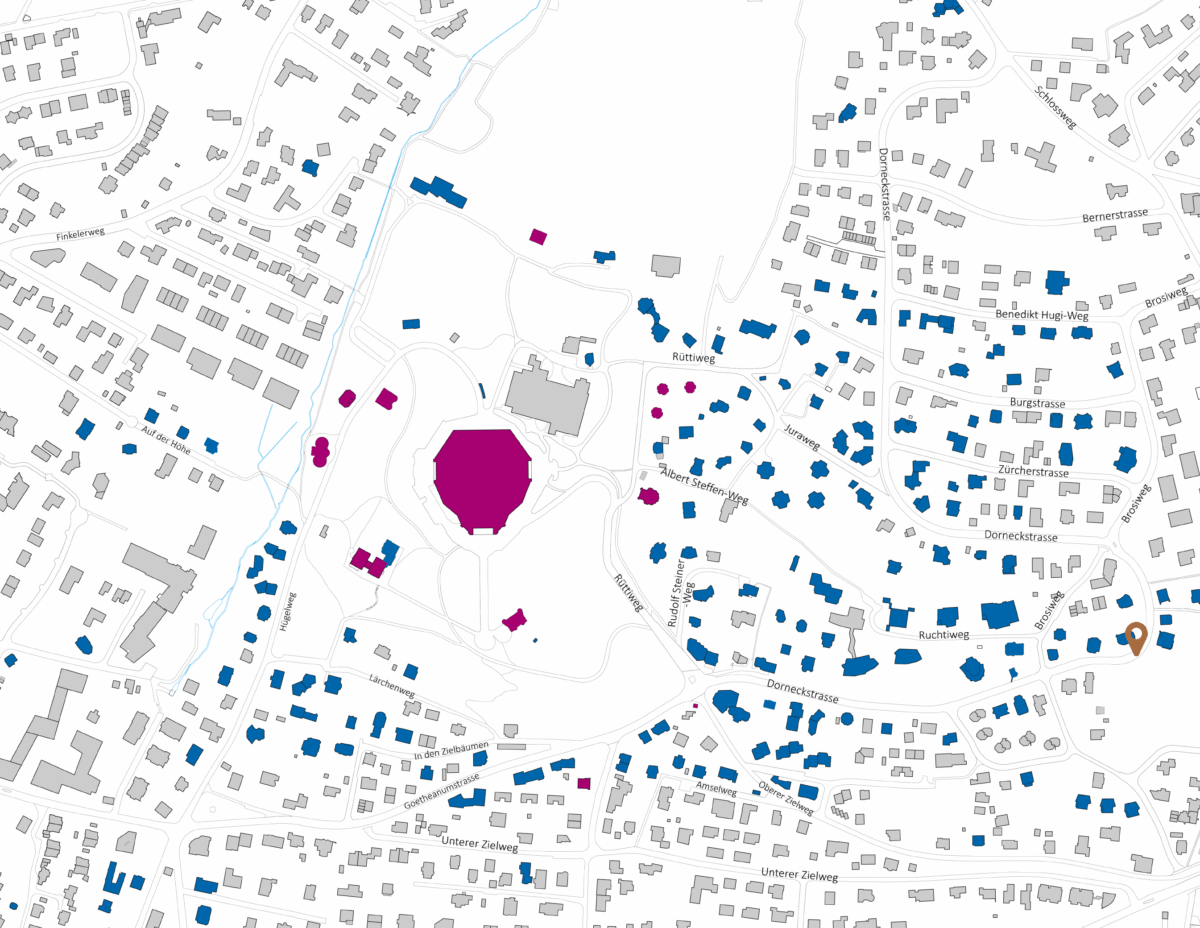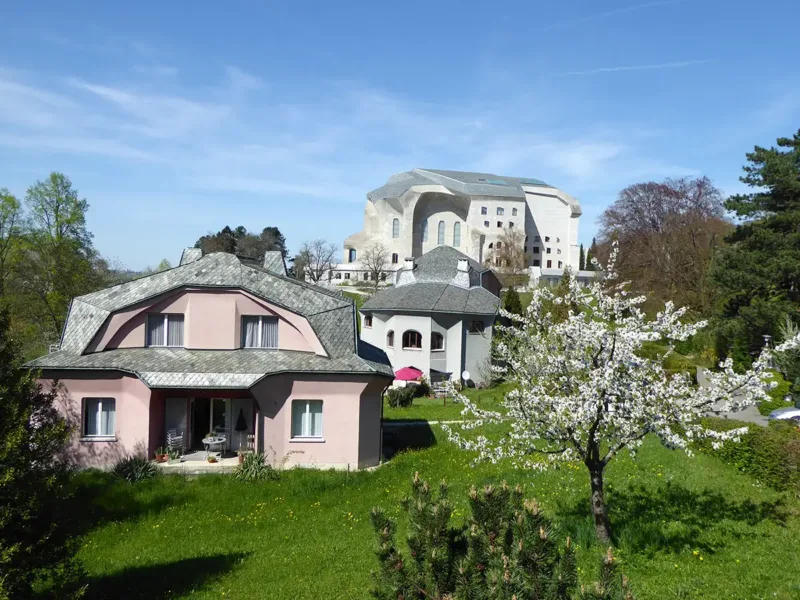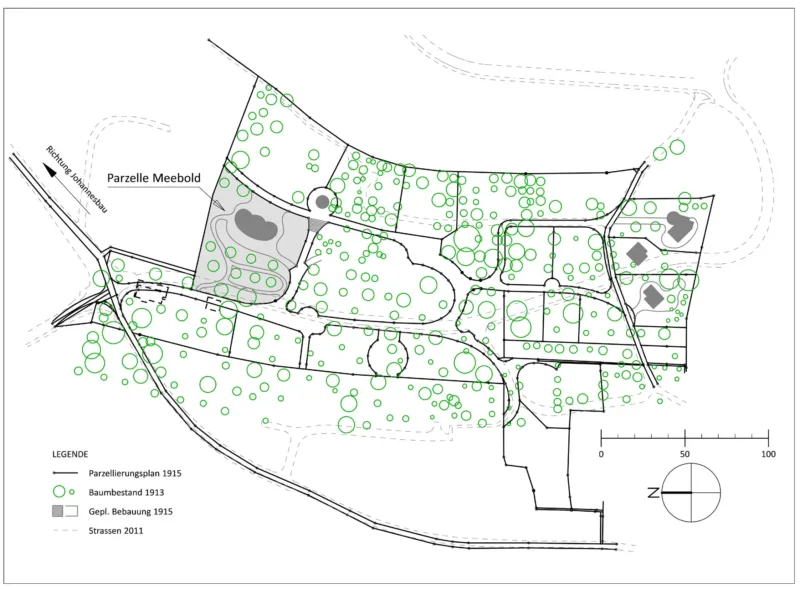4. Environment
The formal language of the landscape
Figures from the surrounding area
Today, many things have become normal that were not thought possible twenty years ago. And so it is difficult for us to imagine what it must have meant for the long-established inhabitants of Dornach when the construction of the first Goetheanum and the houses of the Anthroposophists’ Colony began over a hundred years ago. What must the farmers, craftsmen and dignitaries have thought when they sold their properties to townspeople with incomprehensible ideas, rented them rooms and offered them food and services? How did a simple peasant woman feel at the sight of a European noblewoman in flowing reform dress, opulent jewelry with strange symbolism and possibly accompanied by a gentleman who was not her husband? And what kind of rumors were circulating about what was taught and practiced in the ‘temple’ above the two village centers of Dornachbrugg and Oberdornach?
In return, Rudolf Steiner repeatedly tried to explain his impulse to non-anthroposophists, to break down inhibitions and to give the members of the Anthroposophical Society an awareness of their neighbors – for example, when he scolded them in a lecture about the careless trespassing on farm pastures by residents of the Anthroposophical Colony.
Today, Dornach and the settlement on the hill have grown together, both physically and socially. With its international reputation as a cultural and conference center, the Goetheanum is an important economic factor in the entire region. Weleda, Demeter, Rudolf Steiner schools are part of everyday life today. And it is already the case that people who say they are going to visit the Goetheanum get the answer “Then you are going to Dornach?” and people who say they come from Dornach hear: “Oh, that’s where the Goetheanum is.”
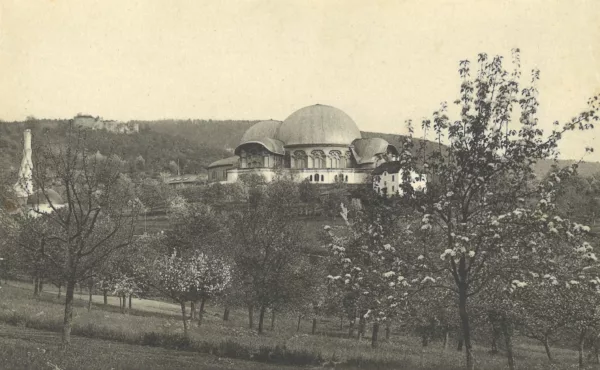
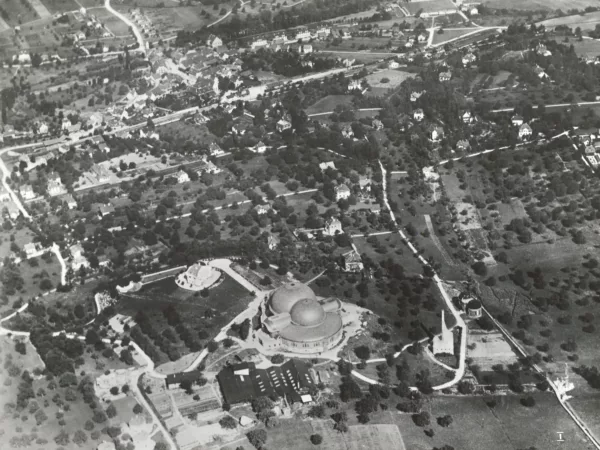
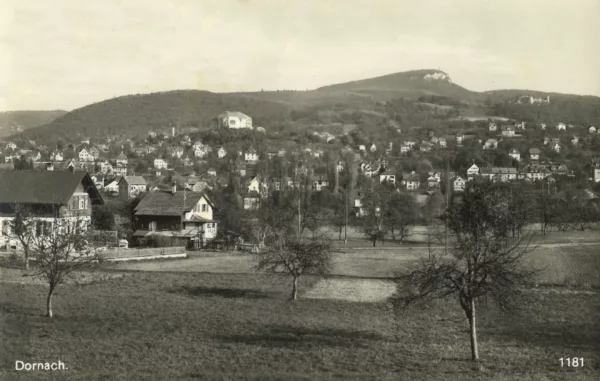
Pictures: © Baravalle archive
Discover the surroundings
Further stations
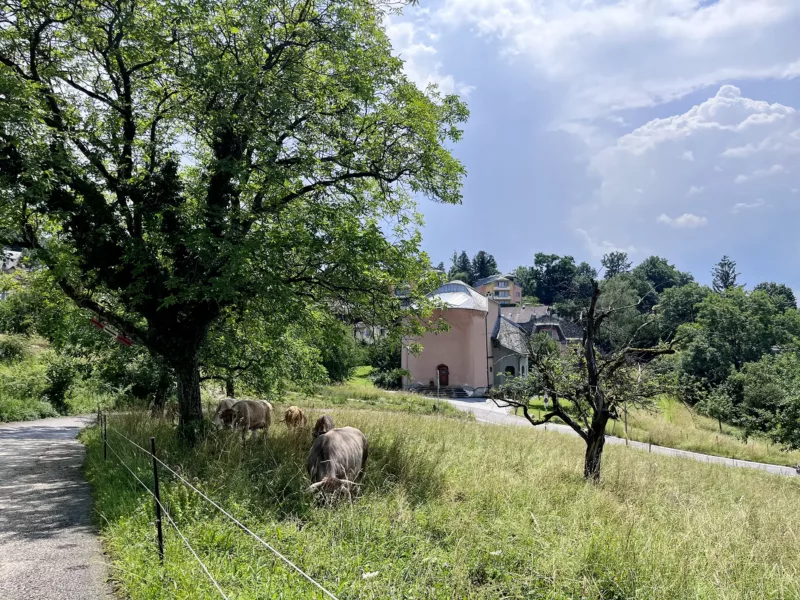
1. Landscape
The Goetheanum and the surrounding sculpturally and organically shaped houses were planned into an old cultural landscape. Architecture, nature and landscape design were to form a special unity and enhance each other’s impact.
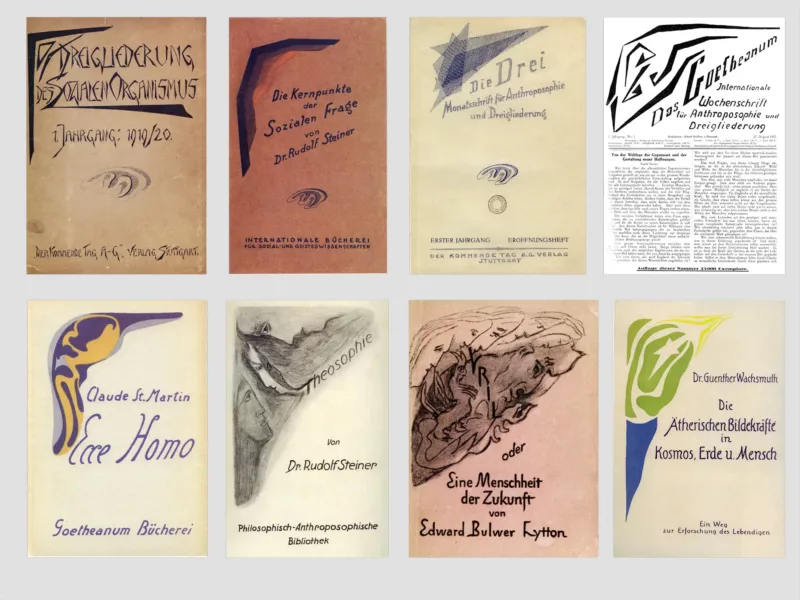
2. Links
The buildings of the Dornach Colony were consciously created from the anthroposophical world view. They are connected in many ways with other branches of anthroposophy, as an expression, as a framework, as the result of development processes.
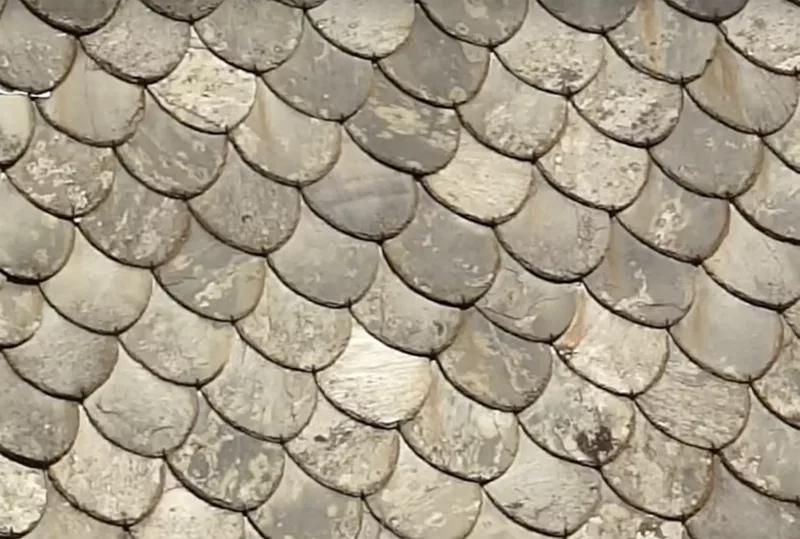
3. Material
In addition to the forms, some special materials also characterize the building on the Dornach hill. Norwegian slate, exposed concrete or colored plaster, wood are important elements of the special atmosphere around the Goetheanum.
Location
